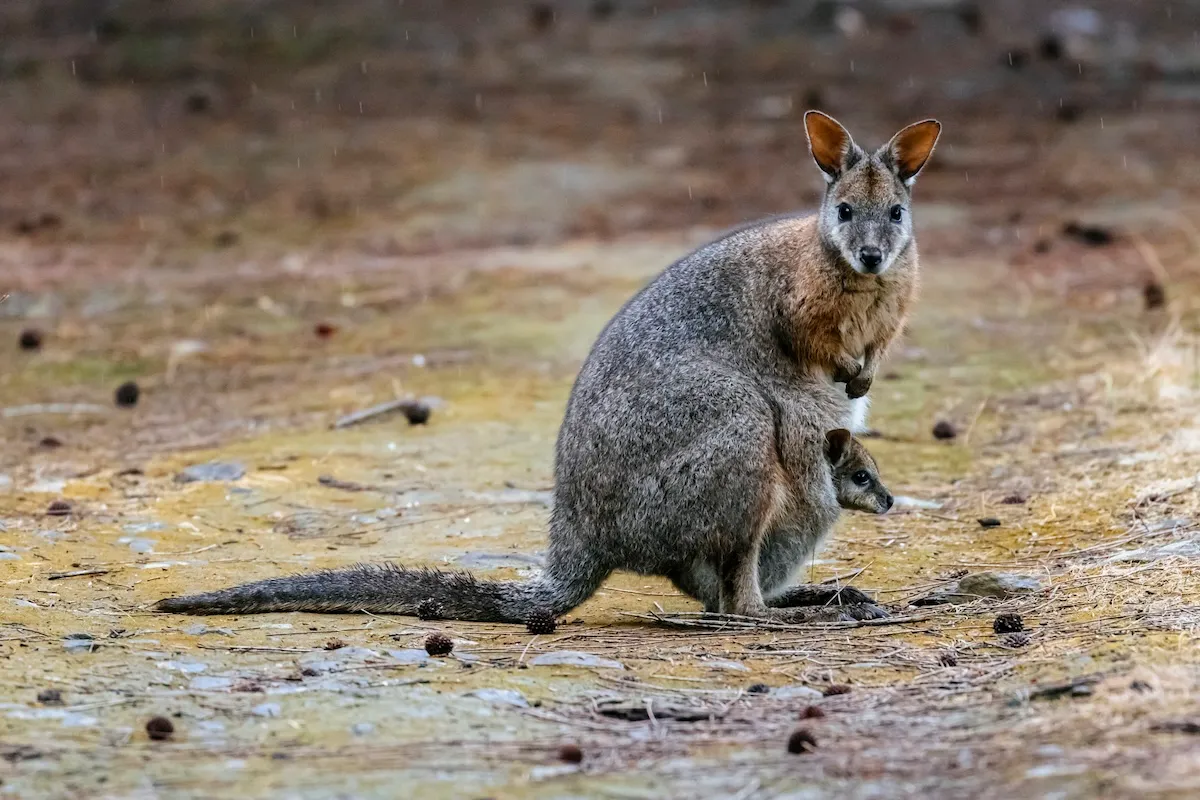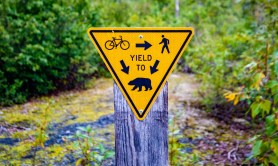

Having been lost and hungry in many different terrains around the world, Bear Grylls knows all about the world’s wildernesses, and he says that trees are one of the wild’s most welcoming and useful inhabitants that you can find.
Videos by Outdoors
“In an otherwise hostile environment, they often seem like the only real friends you have,” he writes in Born Survivor.
Trees provide protection from the elements in their natural state as well as material for making shelters and rafts. Fluid from roots, trunks, branches and hollows can provide drinking water. Finally, the bark, seeds, fruit, leaves and needles can be eaten—if you know what to look for.
Beech Trees

Habitat: Temperate latitudes all over the eastern USA, Europe, Asia and North Africa.
Appearance: Beech is a large, symmetrical deciduous tree with a smooth, light gray bark. The leaves are dark green when on the trees, and the tree produces spiky seed pods.
Tip: “The white meat of beechnuts is the perfect survival food as it is extremely nutritious,” says Bear.
Juniper/Cedar
Habitat: North America, Europe, the Middle East, Asia and the mountains of North Africa, especially in open spaces and bright sunlight.
Appearance: This evergreen has densely clustered, tiny leaves and a distinctive smell (like an old chest or closet).
Tip: “The berries are edible raw and the twigs can be soaked to make a nourishing tea,” says Bear.
Spruce

Habitat: Temperate latitudes in mountainous areas of extreme cold, in northern and southern hemispheres.
Appearance: This pyramid or column-shaped conifer has long, prickly needles varying from dark green to silvery blue in color. They can be up to 100 feet tall.
Tip: “Spruce needles soaked in hot water make an excellent tea rich in vitamin C,” says Bear.
Pine
Habitat: Sunny areas in temperate latitudes of the northern hemisphere in the USA, Caribbean, Middle East, and parts of Asia.
Appearance: Usually evergreen, with sticky sap and distinctive Christmas-y smell.
Tip: “The moist, white inner bark can be eaten raw or ground up, while the needs make a nutritious tea,” says Bear. The pine-cone seeds are also edible, sap can be heated for glue or as an emergency filling for a tooth. You can also crush needles and smear the resin on the skin as a mosquito repellant.
Date Palm

Habitat: Native to North Africa and Middle East, plus other semi-tropical locations.
Appearance: Tall with a crown of leaves at the top and no branches.
Tip: “The fruit is yellow when ripe and can be dried and preserved for long periods,” says Bear. “The leaves can be used to thatch roofs and walls, while the trunk is excellent for shelter-building materials.”
Rattan Palm
Habitat: A rainforest tree that grows mainly in tropical regions of Africa, Asia and Australia.
Appearance: This climber tree attaches itself to other rainforest trees by the hooks on its leaves. The stem can grow up to 200 feet long.
Tip: “The stems contain considerable quantities of drinkable water, while the stem tips and the trunk meat are edible raw or cooked. The stems can also be wound for making cordage,” says Bear.
Sago Palm

Habitat: Tropical rainforests of Asia. Found mainly in damp, watery inland terrain.
Appearance: Stout, short, spiky trunk with thick bark and has a crown of leaves.
Tip: “The soft white inner part of the lower trunk can be pounded up, strained and made into ‘oatmeal,’” says Bear. This is very nutritious and full of starchy sugars. You can also eat sago nuts.
Baobab
Habitat: Savannah lands of Africa and Australia.
Appearance: Distinctive for its bulbous trunk which can grow up to 25 feet wide. There are short, stubby branches near the top of the trunk. The fruit is gourd-shaped and covered in dense hair and can grow up to 18 inches long.
Tip: “The hollow of the trunk collects water while the roots, leaves, fruits and seeds are all edible,” says Bear. You can also make rope from the bark.
More from Bear Grylls:
- How to Make a Toothbrush in the Wild
- Driving in the Snow
- How to Build Shelter in a Forest
- How to Survive Sub-Zero Temperatures
- What to do If You’re Bitten by a Snake
- How to Navigate Without a Compass
- How to Deal with Injuries in Survival Situations
- How to Find Water in the Mountains
- Making Shelter in the Snow
- Priorities of Survival
- How Bear Grylls Lights a Fire









